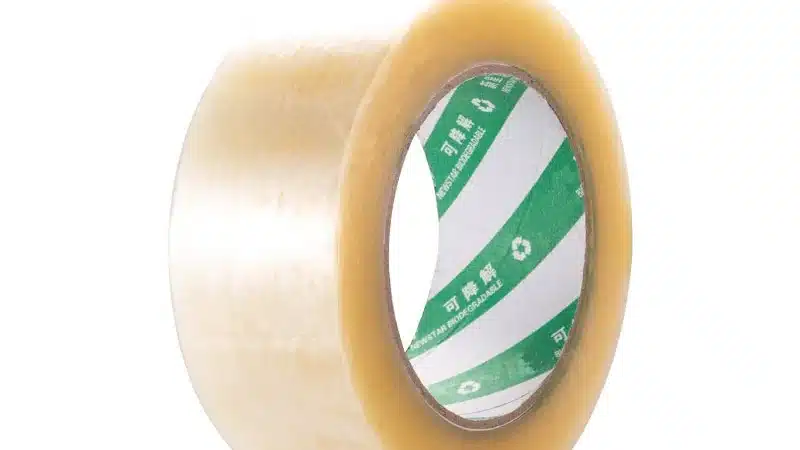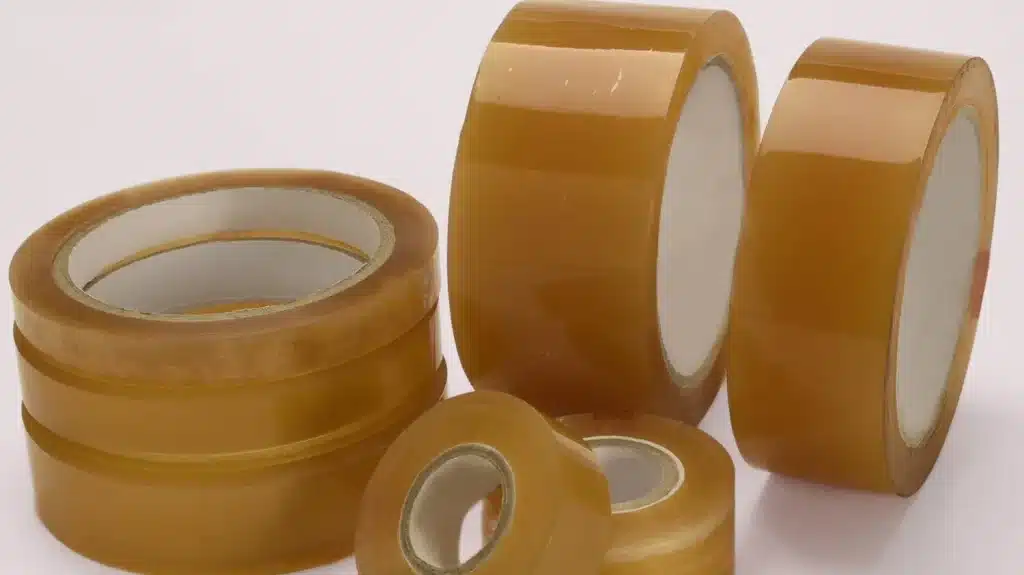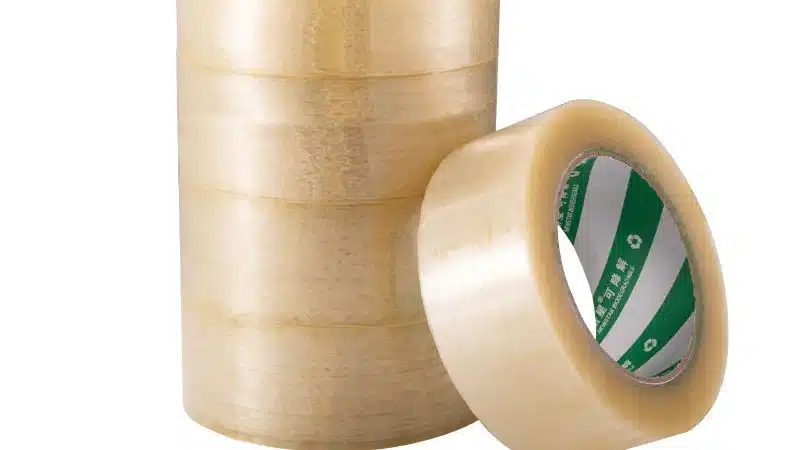Cellulose tape is rapidly gaining popularity as a sustainable alternative to traditional plastic tapes. Derived from renewable plant-based materials, it offers strong adhesion, environmental benefits, and versatility for various tasks. But what is cellulose tape used for exactly?
From everyday household repairs to industrial-grade packaging, cellulose packaging tape has a surprising number of practical applications. Let’s explore the most common and creative ways it’s used—and why it’s the go-to solution for eco-conscious consumers and businesses alike.
Understanding Cellulose Tape
What is Cellulose Tape Made Of?
Cellulose tape is made from regenerated cellulose film, sourced primarily from plant-based materials like wood pulp. This material is biodegradable and compostable. Most eco-friendly versions, like Cellulose Packaging Tape, use natural rubber adhesives, eliminating harmful synthetic compounds.
Key features include:
- 90% renewable resource content
- Plastic-free, petroleum-free
- Compostable and recyclable with paper waste
History and Evolution of Cellulose Tape
Invented in the early 20th century, cellulose tape was one of the earliest transparent tapes on the market. Though later overshadowed by cheaper plastic-based tapes, the recent shift toward sustainable solutions has made cellulose tape a preferred choice again.

Everyday Uses of Cellulose Tape
Gift Wrapping and Crafting
Its transparent finish and tearable edges make cellulose tape a favorite for:
- Wrapping gifts seamlessly
- DIY crafting projects like scrapbooks
- Card making and school decorations
Cellulose Packaging Tape is writable and printable, allowing you to personalize gifts or add labels easily.
Office and School Use
In offices and classrooms, cellulose tape is invaluable for:
- Document sealing and envelope closure
- Temporary repairs on paper
- Labeling folders or supplies
- Holding posters and displays
Its low-noise application and clean removal make it perfect for professional environments.
Home Organization and Repairs
Ideal for household needs:
- Labeling jars and containers
- Sealing small packages
- Fixing lightweight items
Its clear, neat appearance and strong bond make it a practical choice around the home.
Industrial and Commercial Applications
Packaging and Shipping
Cellulose Packaging Tape excels in packaging tasks for businesses seeking sustainable solutions. Whether you’re sealing boxes for e-commerce or moving house, it offers:
- Strong tensile strength for secure sealing
- Temperature resistance from -20°C to 80°C (short-term up to 190°C / 374°F)
- Clear design for a professional look
Plus, it’s compostable and can be recycled with used paper—helping companies reduce plastic waste.
Food Packaging
Being non-toxic and plastic-free, cellulose tape is ideal for:
- Sealing food containers
- Attaching labels to jars or bakery boxes
- Wrapping candies or handmade goods
Perfect for artisanal or organic brands that want to avoid plastic contamination.
Electronics and Manufacturing
Special anti-static versions are used in:
- Circuit board assembly
- Precision component masking
- Electronics manufacturing lines
They provide temporary bonding without affecting sensitive equipment.

Eco-Friendly Benefits of Cellulose Tape
Compostable and Biodegradable
Unlike plastic-based tapes, cellulose tape breaks down naturally in composting conditions, typically within 60–90 days.
- Safe for home composting (if uncoated)
- Leaves no microplastic residue
- Can be disposed of with paper waste
A Greener Alternative to Plastic Tapes
Compared to polypropylene (BOPP) or PVC tapes, cellulose tape:
- Uses renewable raw materials
- Reduces landfill accumulation
- Supports zero-waste goals
By switching to products like Cellulose Packaging Tape, businesses can demonstrate genuine commitment to sustainability.
How to Choose the Right Cellulose Tape
Width, Thickness & Adhesive Strength
| Feature | Recommendation |
|---|---|
| Width | 12–25mm for light packaging and crafts |
| Thickness | Standard for general use; reinforced for packaging |
| Adhesive | Natural rubber for strong eco-friendly bonding |
Branded vs. Generic Options
High-quality branded products like Cellulose Packaging Tape provide:
- Superior adhesion
- Cleaner application
- Verified environmental certifications
Tips for Use and Storage
Best Surfaces for Adhesion
Cellulose tape works best on:
- Dry, clean paper or cardboard
- Biodegradable surfaces
- Light wood or natural packaging films
Avoid glossy, wet, or oily surfaces.
Storage Guidelines
To maintain effectiveness:
- Store in cool, dry environments (15–25°C)
- Keep away from sunlight or humidity
- Use within 12–18 months
Cellulose Tape vs. Traditional Tapes
Comparison Table: Cellulose vs. Plastic Tape
| Feature | Cellulose Tape | Plastic Tape (BOPP/PVC) |
|---|---|---|
| Material Source | Plant-based (renewable) | Petroleum-based (non-renewable) |
| Eco-Friendliness | ✅ Compostable and biodegradable | ❌ Not recyclable or compostable |
| Noise | Quiet application | Often noisy |
| Customizability | Writable and printable | Limited |
| Recyclability | With paper waste | Separate plastic stream |
When Not to Use It
Avoid cellulose tape in:
- High-moisture or freezing environments
- Heavy-duty sealing of very large cartons
- Outdoor conditions with prolonged UV exposure

Latest Innovations in Cellulose Tape
Custom Designs & Printing
Modern cellulose tapes now support:
- Full-color branding
- Custom logos and messaging
- QR code integration for campaigns
Ideal for businesses that want sustainable, brandable packaging.
Water-Activated & Reinforced Versions
Advanced cellulose tapes feature:
- Water-activated adhesives for stronger seals
- Fiber-reinforced designs for higher strength
- Dual-material blends for enhanced durability
Featured Product: Cellulose Packaging Tape
Looking for an eco-friendly, high-performance tape? Try Cellulose Packaging Tape, a biodegradable and compostable solution made from 90% renewable materials, including plant-based cellulose and natural rubber adhesive.
Top Features:
- Eco-Friendly – Sustainable and recyclable with paper
- High Tensile Strength – Strong adhesion even under extreme temperatures
- Writable & Printable – Great for custom labels or branding
- Versatile – Ideal for shipping, moving, crafts, gift wrapping, and office use
- Temperature Resistant – Withstands -4°F to 176°F, with peaks up to 190°C (374°F)
Whether you’re a small business or a green household, this tape blends performance, sustainability, and style in one simple roll.
FAQs About Cellulose Tape
1. Is cellulose tape compostable at home?
Yes, if it’s uncoated or made with natural adhesives, it breaks down in home compost bins.
2. Can it seal heavy boxes?
Standard versions are for light-to-medium use. Reinforced types are better for heavy-duty packing.
3. Is cellulose tape waterproof?
No, it absorbs moisture. Use in dry environments for best performance.
4. Does it leave residue?
No, it usually removes cleanly from paper or cardboard.
5. Can I print on it?
Yes! Cellulose Packaging Tape has a printable surface ideal for custom logos and labels.
6. Is it recyclable?
It can be recycled with paper waste or composted, unlike plastic tapes.
Conclusion: Why Cellulose Tape Is a Smart Choice
Cellulose tape isn’t just an alternative—it’s the future of eco-packaging. With increasing focus on sustainability, switching to Cellulose Packaging Tape means aligning your practices with the planet’s needs.
Whether you’re organizing your home, crafting DIY gifts, or shipping products to customers, cellulose tape delivers dependable performance without compromising on environmental ethics.
Make the switch today—and choose Fonitaniya, a trusted name in sustainable packaging solutions.




